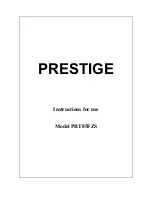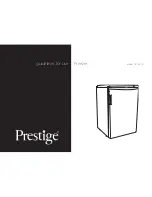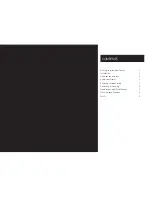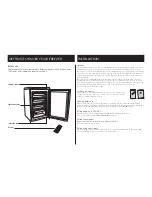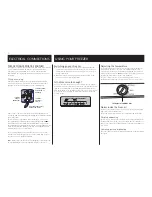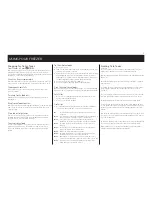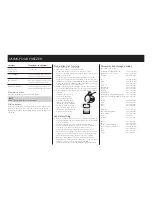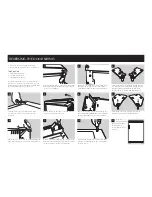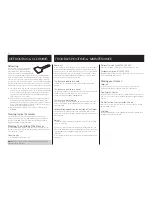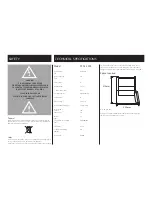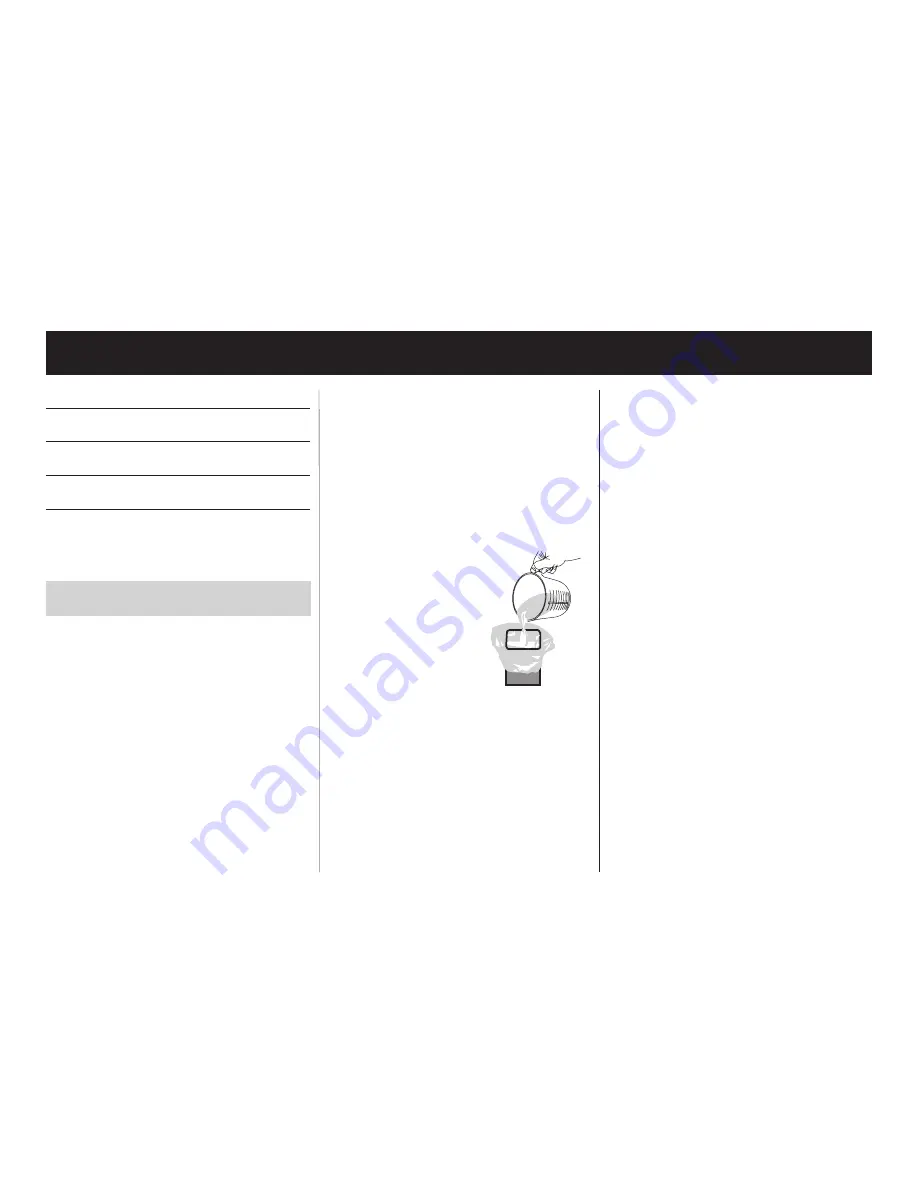
6
USING YOUR FREEZER
Recommended storage periods
(when frozen from fresh)
Fruit Syrup or Sugar packed Fruit
up to 12 months
Open Frozen or Puréed Fruit
up to 18 months
Fruit juices
up to 6 months
Beef
up to 10 months
Lamb
up to 10 months
Veal
up to 6 months
Pork
up to 6 months
Minced meat
up to 3 months
Cured meats
up to 2 months
Sausages
up to 3 months
Packed bacon
up to 3 months
Smoked bacon/ chops/ gammon steaks
up to 2 months
Unsmoked bacon/ chops/ gammon steaks up to 1 month
Chicken
up to 8 months
Duck
up to 5 months
Goose
up to 5 months
Turkey
up to 6 months
White fish
up to 5 months
Oily fish including salmon
up to 2 months
Smoked salmon
up to 3 months
Caviar
don’t freeze
Shellfish
up to 1 month
Butter
up to 6 months
Cheese
up to 6 months
Cream - double/ whipping
up to 3 months
Eggs - only freeze separated
up to 10 months
Suet
up to 6 months
Milk
up to 1 month
Yogurt
up to 6 weeks
TO FREEZE
THERMOSTAT TO POSITION 5
A loaf of bread
not required
A small casserole
Up to 2lb/900gm
2 hrs. before placing food in Freezer
and 4 hrs. after placing food in Freezer
Over 6lb/2.7kg
6 hrs. before placing food in Freezer and
12 hrs. after placing food in Freezer
Maximum of 22lb/10kg
24 hrs. before placing food in Freezer
and 24 hrs. after placing food in Freezer.
What not to freeze
Bananas, Pomegranates, Pears or Carbonated liquids.
NOTE
:
DO NOT STORE INFLAMMABLE GASES OR LIQUIDS.
Making ice cubes
Fill the ice cube tray with fresh drinking water and place in the Freezer.
After the ice cubes are made you can remove them from the tray by
twisting the tray slightly and or placing the tray under running water for
a short time.
Preparations for freezing
• Leave cooked food to cool completely.
• Chill food in a Fridge before freezing if possible.
• Consider how you want to cook the food before freezing it.
• Don’t freeze food in metal containers if you may want to microwave it
straight from the Freezer.
• Use special freezer bags available from supermarkets, freezer film,
polythene bags, plastic containers, aluminium foil (heavy grade only, if
in doubt, double wrap). Don’t use aluminium foil for acidic foods (such
as citrus fruits). Don’t use thin cling film or glass. Don’t use used food
containers (unless cleaned thoroughly first).
• Exclude as much air from the container as possible. You could buy a
special vacuum pump which sucks excessive air out of the packaging.
• Leave a small amount of ‘air space’ when freezing liquids, to allow for
expansion.
• You can use the space in the
freezer most efficiently if
you freeze liquids (or solids
with liquids, such as stew) in
square blocks. This is known as
‘preforming’. Pour the liquid into
a polythene bag which is inside a
square sided container. Freeze it
like this, then remove it from the
container and seal the bag.
Label everything
• Many foods look the same when frozen, so careful labelling will help
avoid forgetting what an item is. Storage times being exceeded could
cause food poisoning.
• You can buy special freezer tape for use in low temperatures.
This tape is available in white, so you can use it to write the items
contents on. You can buy special freezer labels and pens.
Labels come in different colours which can help you use your
Freezer effectively. For instance you could colour code meat red and
vegetables green. Using a different colour label for each quarter of
the year will help you rotate your frozen food more efficiently.
• Write the contents and date. If you are really organised add the
weight and notes on cooking such as ‘thaw first’, or ‘cook from frozen’
and keep a separate ‘log-book’ of what is in each drawer.
This will save opening the door and searching around unnecessarily.
Summary of Contents for PRT 85 FZS
Page 1: ...PRESTIGE Instructions for use Model PRT85FZS...
Page 2: ......
Page 3: ...Freezer Model PRT 85 FZS guidelines for use...
Page 12: ...10...
Page 13: ......

